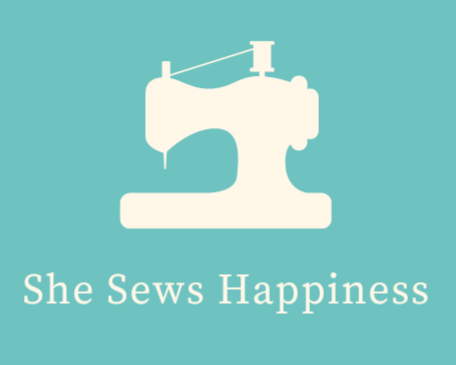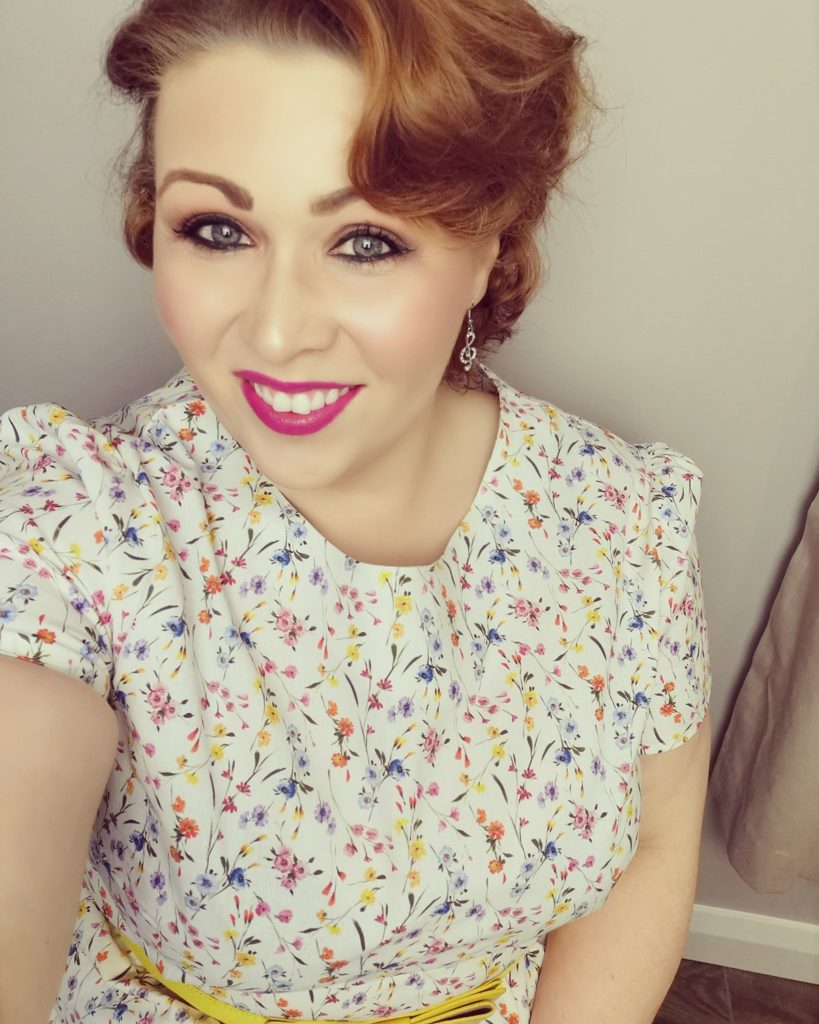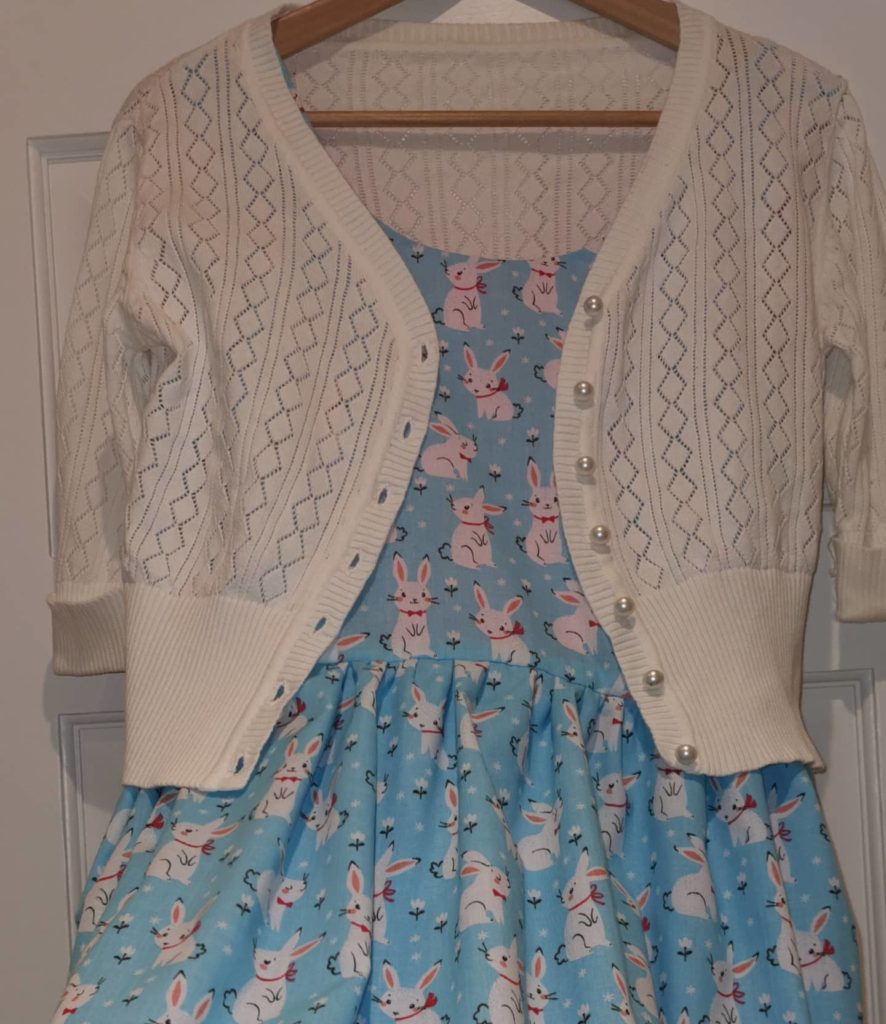Since I started sewing at the beginning of 2020, I’ve been overwhelmed by the number of people I know who either expressed how they’d love to start sewing their own clothes or that they can’t believe how professional looking my makes have been since I first decided to begin dressmaking. This post is for you folks.
I’ve already sent a few people in the right direction by telling them that my seemingly effortless beginning to sewing is owing to one particular book – Tilly Walnes’ Demystifying Dressmaking – Love At First Stitch.

This book has been out for quite a while but it’s always going to be new to someone starting out – like me! For anyone who is new to sewing, this book is the perfect starting point but the projects are so lovely that even a more advanced sewist would be happy to have the garments in their handmade wardrobe. Tilly starts the book explaining all the features of your sewing machine and, from the outset, you get a cosy feeling of having someone at hand to guide you through the labyrinth.
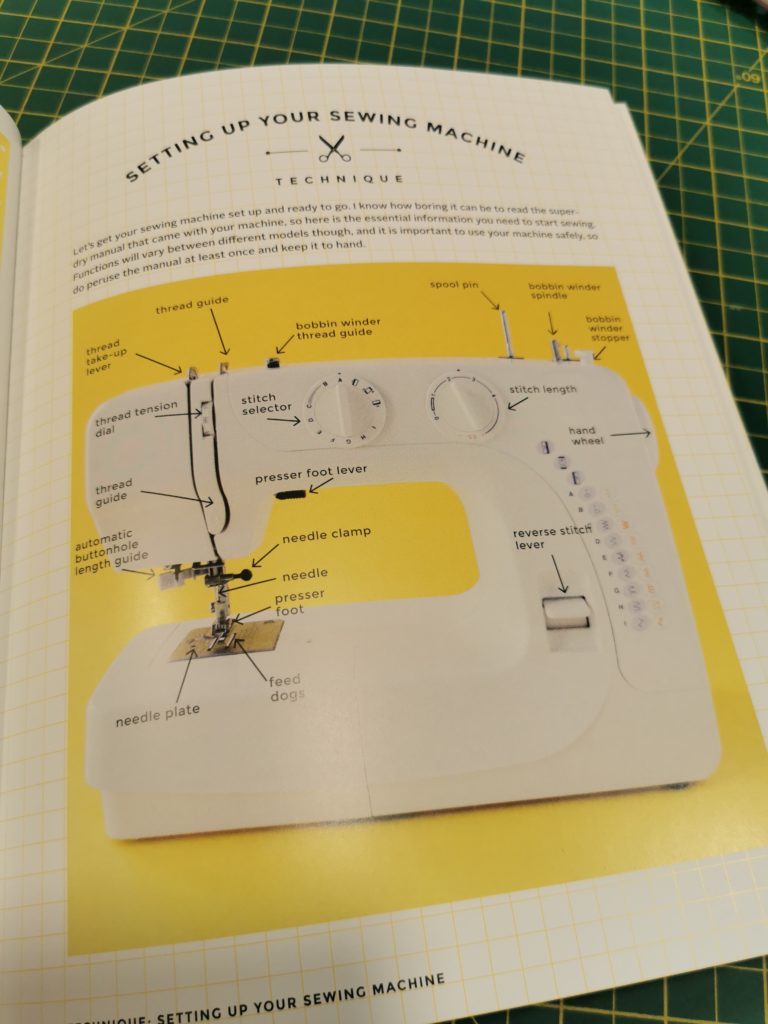
Tilly’s manner of explaining is so simple and uncomplicated that you really can’t go wrong – I’ve managed to complete all 7 projects included in the book, 5 of which are full-sized printed patterns included in an envelope at the back of the book, advancing my skills and taking on more challenging tasks as I worked through each project. Bear in mind, you wouldn’t get two stand alone patterns for the price of the book.
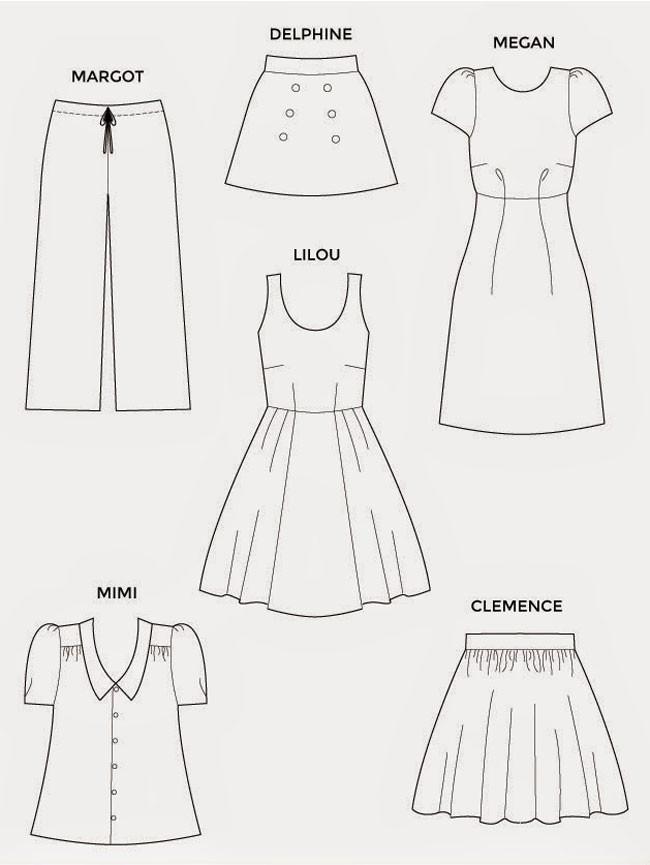
Working progressively through ‘Love at First Stitch’, you will go on a skill building and jargon busting journey – all the terminology is so perfectly explained. You do not need to have any sewing experience or knowledge to get started – I had none at all!
Each project can be treated like a stand-alone pattern; it covers measuring yourself to get the right size, preparing your patterns, and cutting your fabric. It also teaches things such as stay stitching, French seams, basting and pressing (with an interactive glossary running through the book). Really, consider this book the equivalent of going to a six-week practical workshop. As you work your way through the book, you’ll be given suggestions for making the patterns ‘your own’ through customising and adapting.
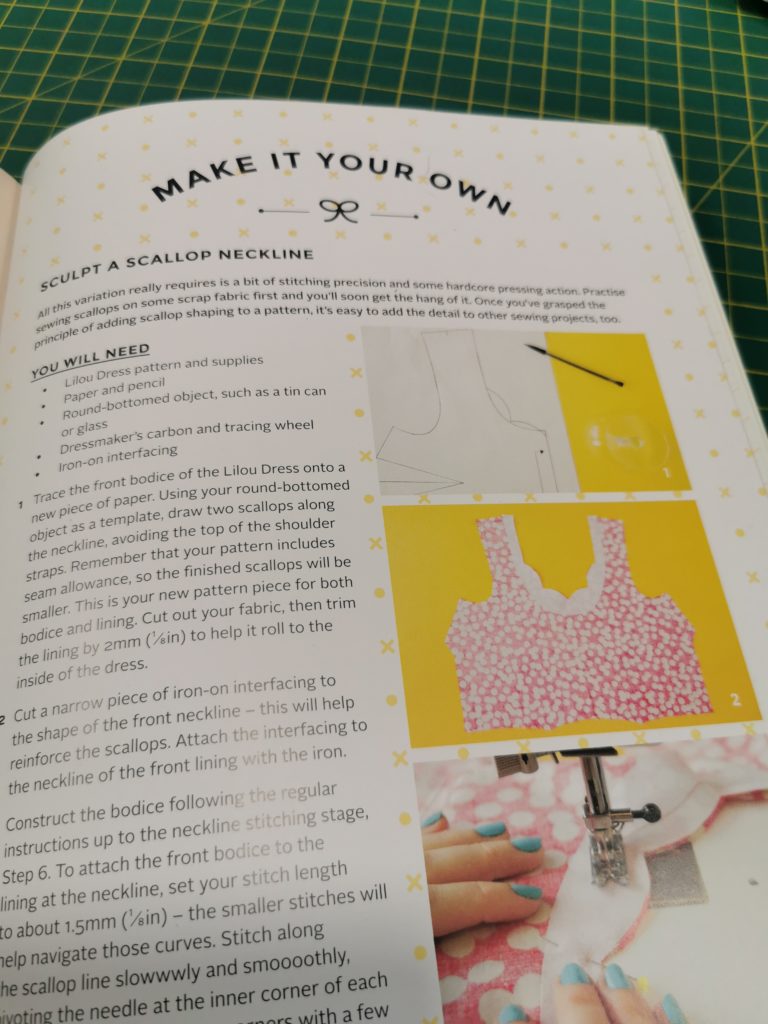
The first project is the Brigitte scarf – this teaches you basic stitching. I’ve already adapted it to make a few matching head scarves to wear with my garments (mine are much shorter and thinner as I’m growing out a pixie cut so my hair is not quite yet bob-length). I haven’t done this yet, but you could use the basic principles to create belts for dresses – and that’s one of the great things about sewing – you can make things to suit your own needs and style.
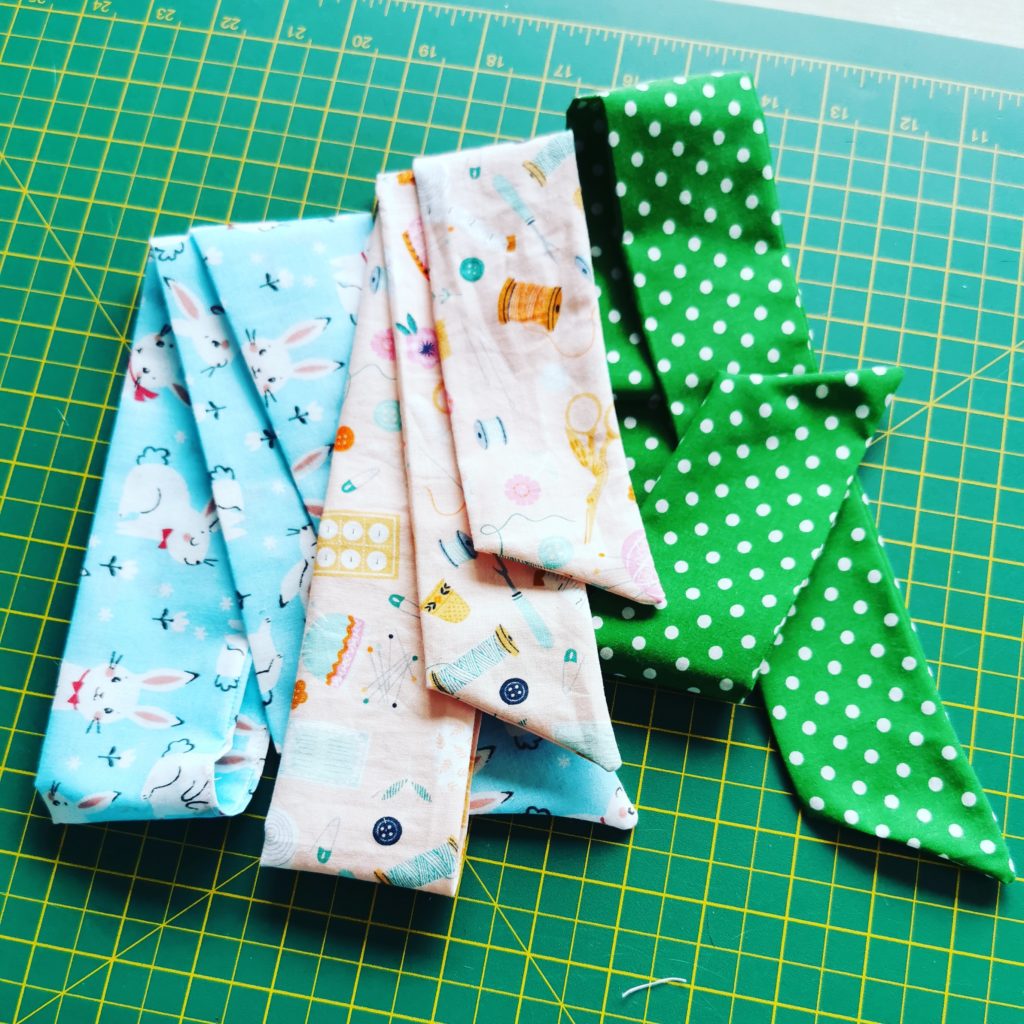
The Margot bottoms take you a little further into using patterns – you do need to trace off each pattern as the printed copies overlap each other, but they are so much clearer than commercial patterns so this isn’t too hard. I do this with all my patterns anyhow, even the commercial ones (good lighting is a must) as it allows me to reuse the patterns to make different sizes. The patterns themselves are very clear and easy to follow. I’ve also found the sizing to be spot on – and this is the part that makes all the difference: to know your size. Tilly talks you through how to measure yourself in her book so if you follow her suggestions you’ll do just fine.
The Megan Dress is a simple, straightforward introduction to dressmaking – this pattern will take away any misgivings you have about sewing dresses – darts, for example, you will discover are easy! You’ll also learn how to insert sleeves.
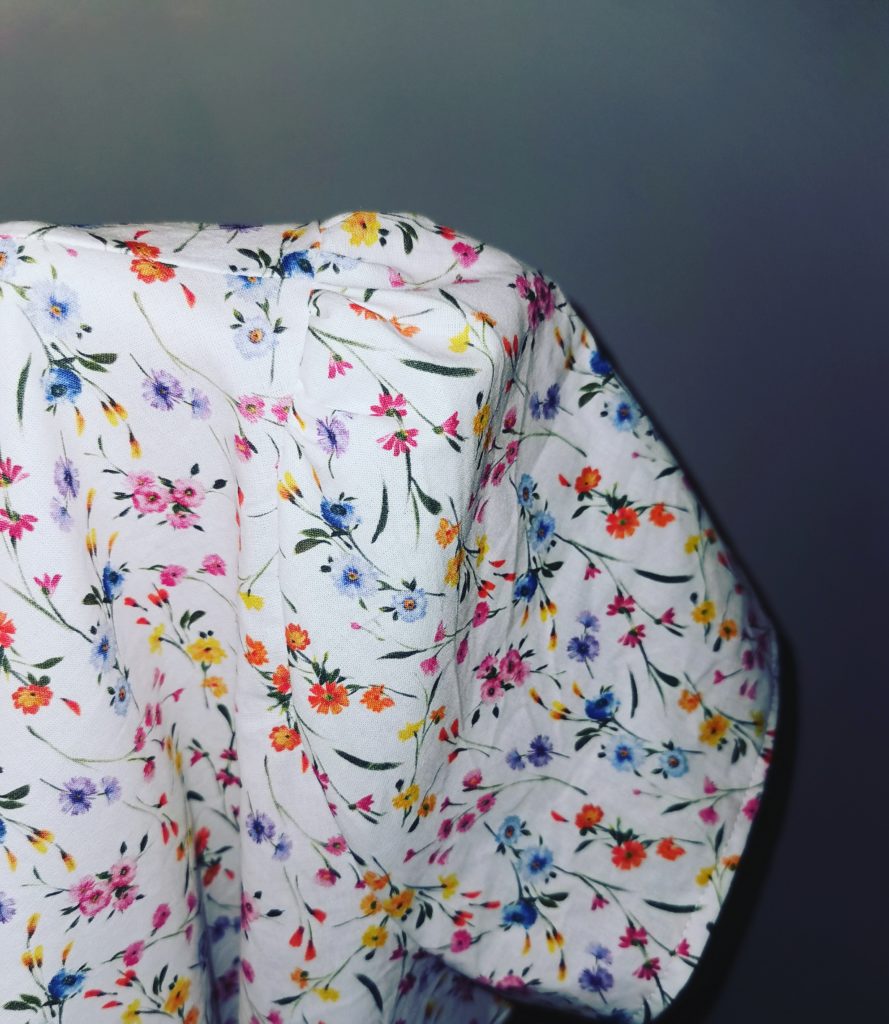
The Delphine skirt seemed a bit more difficult than the PJ bottoms so I first made it in an inexpensive black cord that I picked up one evening after work in Hobbycraft and added a few gold buttons to bling it up a little but I needn’t have bothered with a practice run because even inserting a zip (I did make a couple of zip pouches to practice this skill beforehand) was so well-explained (the photographic illustrations are an absolute godsend) that it was an easy make.
The only thing I can complain about was the fluff from the cuttings that seemed to make their way around the house. I loved the A-line shape and the length of the skirt gives it a real 60s vibe (but Tilly shows you how to lengthen and shorten all the patterns to suit your body / style preferences). I made it again – pretty much immediately. This time, I bought a navy drill cotton from Fabric Godmother to really play with that A-Line cut and could be worn with pretty much any top or sweater. I’m not really a skirt person and I much prefer dresses but the Delphine skirt seemed to be an exception.
The Mimi blouse is a perfect partner for the Delphine skirt – it requires you to sew buttons and buttonholes and add a collar, key skills that beginners can master with practice and with the very helpful steps in the book. Again, I reiterate, separates are not my thing – my wardrobe is 99.9% dresses, but I will wear this. I couldn’t resist this London themed fabric which, if my memory serves me, I bought online from Minerva Crafts.

The Clemence skirt gives you experience drafting your own pattern. I made a light chambray denim version which I’m sure will get a run during the summer months.
The Lilou dress is my favourite – it’s just so perfectly comfortable and has become a work wardrobe staple for me. It is a bit more complicated than the Megan but if you do what I do and work the projects in the order Tilly intended (but I stress, this is not essential given the clear instructions), you’ll be self-assured in your skills to take it on – you’ll also discover that lining a dress isn’t as complicated as you’d think. The first one I made was a small floral print, which came out on Valentine’s, accessorised with this little wooden brooch from a seller on Etsy.

This was followed by a black watch tartan print as it’s a favourite of mine – I have a couple of black watch dresses that have has been worn half to death and needed replaced. I also made a navy polka dot version with fabric left over from making the Megan dress (yes, I made two of those, too). I purchased both fabrics in a local fabric store, Paragon Fabrics in Belfast, on a whim, thinking I’d be branching out into other patterns but I found the Lilou fitted bodice and flowing skirt to be such a perfect combination that I decided just to run them off – the patterns had already been traced, after all, and I knew the fit was good.
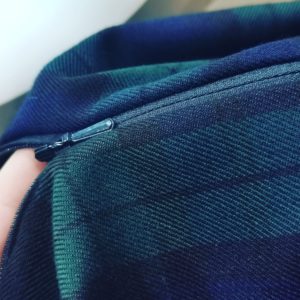
I’ve also adapted the Lilou dress to make a couple of gathered skirt versions, too. The Lilou needs wide fabric (preferably 60 inches) to allow for the pleats and I had a couple of 44 inch-wide fabrics that I just couldn’t wait to use and I didn’t want to have to make a toile for another style. I just took the skills I had learned making the Clemence skirt and adapted the Lilou dress to create this Dashwood Studios sewing notions print dress and an adorable little bunny print dress for Easter.
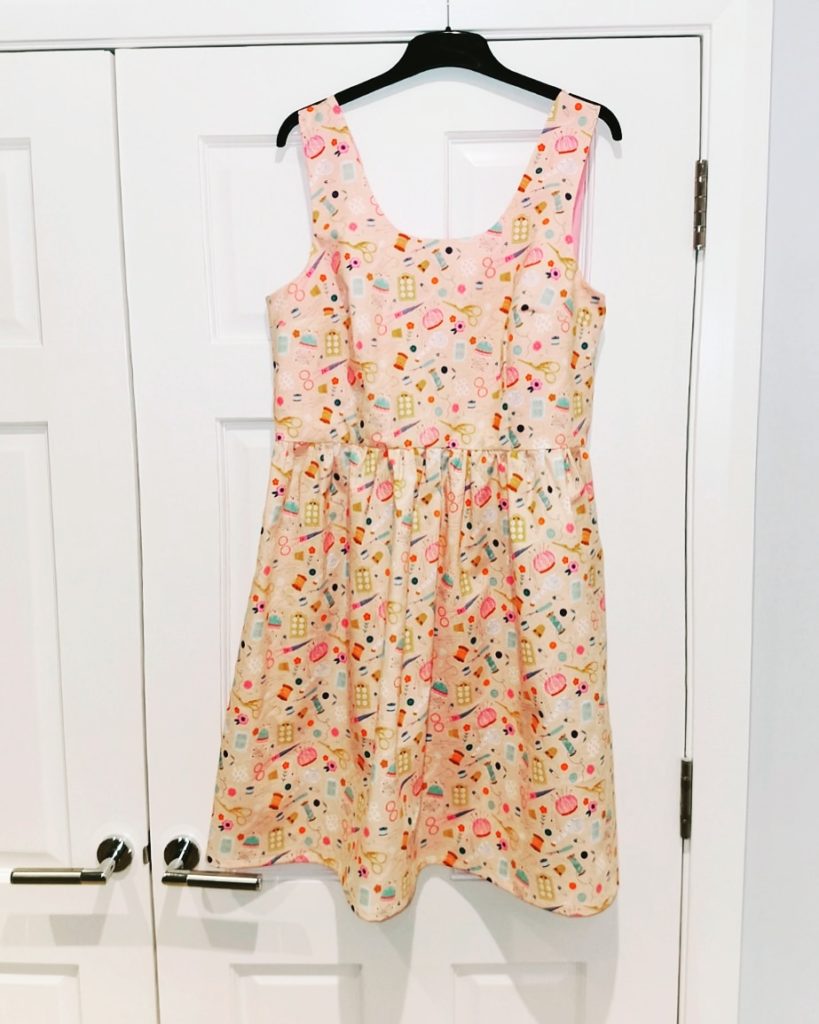
Adding another two Lilou dresses (one a scalloped neckline version in emerald green for St. Patrick’s Day next week – the scallop is a hack included in the book – and one a beautiful pink rose print) to the tally, I’ve actually made 7 variants on the Lilou dress in the last month. Suffice to say, I’ve got a lot of value out of the book.
Tilly’s book does exactly what the title claims to do and demystifies dressmaking. I will use some of these patterns again. I’ve started taking on more intermediate patterns in the last couple of weeks (using jersey knit fabrics) which I’ll come back on here to review, but I can tell I’ll come back now and again, especially to the Lilou dress and the Margot bottoms (think Christmas PJs) for a little comfort sewing.
